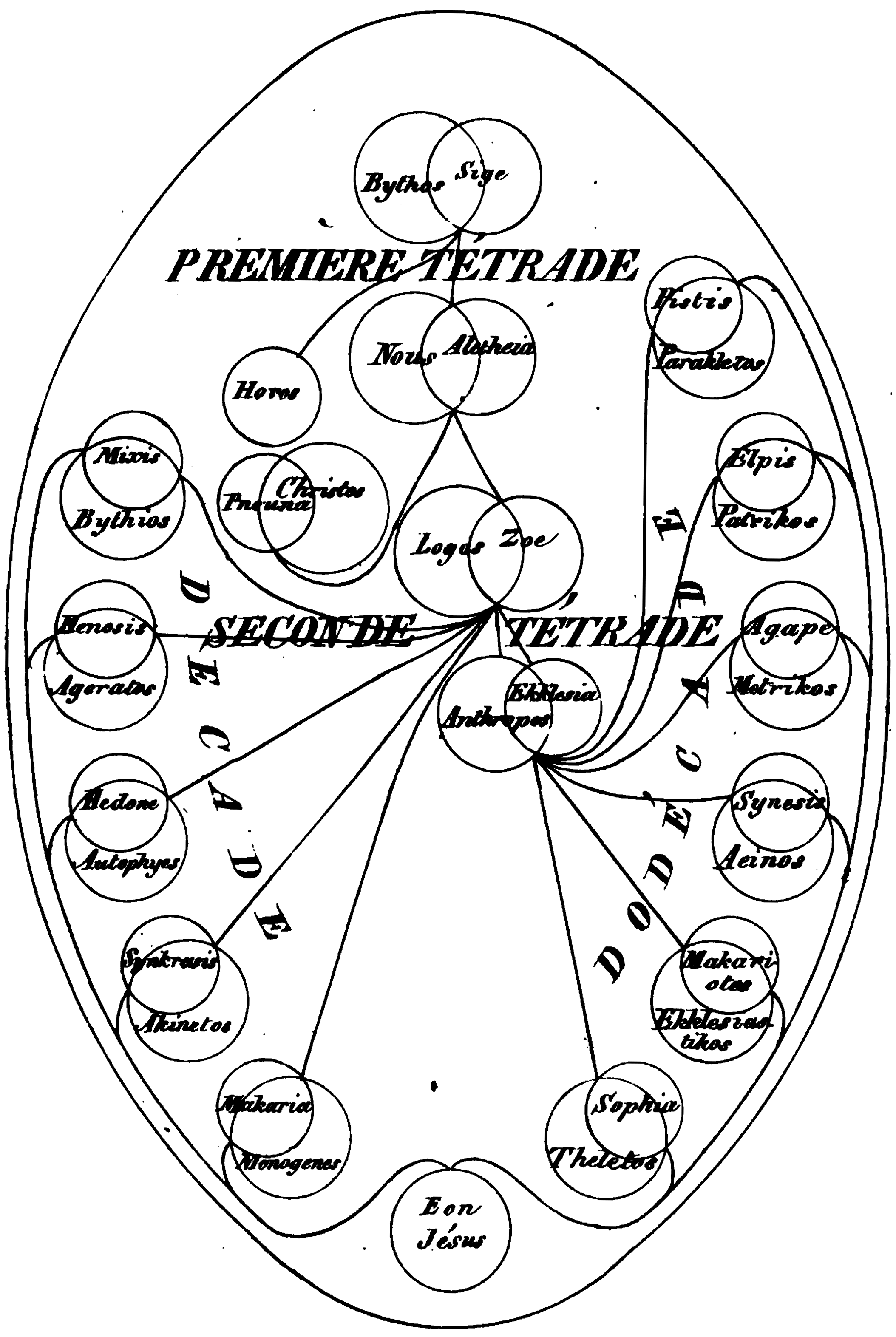|
Syzygy
Syzygy (from Greek Συζυγία "conjunction, yoked together") may refer to: Science * Syzygy (astronomy), a collinear configuration of three celestial bodies * Syzygy (mathematics), linear relation between generators of a module * Syzygy, in biology, the pairing of chromosomes during meiosis * Syzygy endgame tablebases, used by chess engines Philosophy * Syzygy, a concept in the philosophy of Vladimir Solovyov denoting "close union" * Syzygy, a term used by Carl Jung to mean a union of opposites, e.g. anima and animus * Syzygy, female–male pairings of the emanations known as Aeon (Gnosticism) Literature * Epirrhematic syzygy: a system of symmetrically corresponding verse forms in Greek Old Comedy * "It Wasn't Syzygy", a short story by Theodore Sturgeon * ''Syzygy'', a novel by Michael G. Coney * ''Syzygy'' (novel), a novel by Frederik Pohl * Syzygy (poetry), the combination of two metrical feet into a single unit * Syzygy Darklock, a fictional character in the com ... [...More Info...] [...Related Items...] OR: [Wikipedia] [Google] [Baidu] |
Syzygy (mathematics)
In linear algebra, a linear relation, or simply relation, between elements of a vector space or a module is a linear equation that has these elements as a solution. More precisely, if e_1,\dots,e_n are elements of a (left) module over a ring (the case of a vector space over a field is a special case), a relation between e_1,\dots,e_n is a sequence (f_1,\dots, f_n) of elements of such that :f_1e_1+\dots+f_ne_n=0. The relations between e_1,\dots,e_n form a module. One is generally interested in the case where e_1,\dots,e_n is a generating set of a finitely generated module , in which case the module of the relations is often called a syzygy module of . The syzygy module depends on the choice of a generating set, but it is unique up to the direct sum with a free module. That is, if S_1 and S_2 are syzygy modules corresponding to two generating sets of the same module, then they are stably isomorphic, which means that there exist two free modules L_1 and L_2 such that S_1\opl ... [...More Info...] [...Related Items...] OR: [Wikipedia] [Google] [Baidu] |
Syzygy (astronomy)
In astronomy, a syzygy ( ; ) is a roughly straight-line configuration of three or more celestial bodies in a gravitational system. Overview The word is often used in reference to the Sun, Earth, and either the Moon or a planet, where the latter is in conjunction or opposition. Solar and lunar eclipses occur at times of syzygy, as do transits and occultations. The term is often applied when the Sun and Moon are in conjunction (new moon) or opposition (full moon). The word ''syzygy'' is often used to describe interesting configurations of astronomical objects in general. For example, one such case occurred on March 21, 1894, around 23:00 GMT, when Mercury transited the Sun as would have been seen from Venus, and Mercury and Venus both simultaneously transited the Sun as seen from Saturn. It is also used to describe situations when all the planets are on the same side of the Sun although they are ''not necessarily in a straight line'', such as on March 10, 1982. On June ... [...More Info...] [...Related Items...] OR: [Wikipedia] [Google] [Baidu] |
Syzygys (band)
Syzygys is a Japanese organ-violin duo composed of Hitomi Shimizu on organ and Hiromi Nishida on violin. Formed in 1985, they play "microtonal pop music", specifically just intonation in the form of Harry Partch's 43-tone scale.Louise Duchesneau, Wolfgang Marx (2011). ''György Ligeti: Of Foreign Lands and Strange Sounds'', p.136. Boydell & Brewer. . "The music of Syzygys...which is based on Partch's 43-tone scale, remains an individual case. Nishida studied Arabic style violin with Abdo Dagir. They have released albums on Tzadik Records, including ''Syzygys: Complete Studio Recordings'' (2003, Tzadik #7240). , ''Huygens-Fokker.org''. Accessed: December 09 2016. György Ligeti
[...More Info...] [...Related Items...] OR: [Wikipedia] [Google] [Baidu] |
Endgame Tablebases
An endgame tablebase is a computerized database that contains precalculated exhaustive analysis of chess endgame positions. It is typically used by a computer chess engine during play, or by a human or computer that is retrospectively analysing a game that has already been played. The tablebase contains the game-theoretical value (win, loss, or draw) in each possible position, and how many moves it would take to achieve that result with perfect play. Thus, the tablebase acts as an oracle, always providing the optimal moves. Typically the database records each possible position with certain pieces remaining on the board, and the best moves with White to move and with Black to move. Tablebases are generated by retrograde analysis, working backward from a checkmated position. By 2005, all chess positions with up to six pieces, including the two kings, had been solved. By August 2012, tablebases had solved chess for almost every position with up to seven pieces, but the po ... [...More Info...] [...Related Items...] OR: [Wikipedia] [Google] [Baidu] |
Syzygy (LP)
Syzygy (from Greek Συζυγία "conjunction, yoked together") may refer to: Science * Syzygy (astronomy), a collinear configuration of three celestial bodies * Syzygy (mathematics), linear relation between generators of a module * Syzygy, in biology, the pairing of chromosomes during meiosis * Syzygy endgame tablebases, used by chess engines Philosophy * Syzygy, a concept in the philosophy of Vladimir Solovyov denoting "close union" * Syzygy, a term used by Carl Jung to mean a union of opposites, e.g. anima and animus * Syzygy, female–male pairings of the emanations known as Aeon (Gnosticism) Literature * Epirrhematic syzygy: a system of symmetrically corresponding verse forms in Greek Old Comedy * "It Wasn't Syzygy", a short story by Theodore Sturgeon * ''Syzygy'', a novel by Michael G. Coney * ''Syzygy'' (novel), a novel by Frederik Pohl * Syzygy (poetry), the combination of two metrical feet into a single unit * Syzygy Darklock, a fictional character in the comic ... [...More Info...] [...Related Items...] OR: [Wikipedia] [Google] [Baidu] |
Lucrecia Dalt
Lucrecia Dalt is a Colombian experimental musician who currently resides in Berlin. While her earlier releases were rooted in electronic dance music, her work has evolved over time to become more overtly abstract and experimental. Biography Dalt was born in Pereira, Colombia. She studied civil engineering and worked for two years in a geotechnical company in Medellin before deciding to pursue music. Her first recordings were released by Colombian collective Series under the name ''Lucrecia''. After meeting Gudrun Gut, she contributed four songs to the ''4 Women No Cry'' compilation released on Monika Enterprise in 2008. After moving to Europe she released a series of recordings, including a release on Nicolás Jaar's Other People imprint and a series of collaborations with Aaron Dilloway. Among her more recent releases are the albums ''Anticlines'' (2018), ''No Era Sólida'' (2020) and ''¡Ay!'' (2022) on RVNG Intl. In 2022 Dalt announced her debut film score for '' The Seed ... [...More Info...] [...Related Items...] OR: [Wikipedia] [Google] [Baidu] |
Syzygy (poetry)
In poetry, a syzygy is the combination of two metrical feet into a single unit, similar to an elision In linguistics, an elision or deletion is the omission of one or more sounds (such as a vowel, a consonant, or a whole syllable) in a word or phrase. However, these terms are also used to refer more narrowly to cases where two words are run toget .... Consonantal or phonetic syzygy is also similar to the effect of alliteration, where one consonant is used repeatedly throughout a passage, but not necessarily at the beginning of each word. Poetic devices Poetic rhythm {{poetry-stub el:Συζυγία (γραμματική) ... [...More Info...] [...Related Items...] OR: [Wikipedia] [Google] [Baidu] |
Atari, Inc
Atari, Inc. was an American video game developer and home computer company founded in 1972 by Nolan Bushnell and Ted Dabney. Atari was a key player in the formation of the video arcade and video game industry. Based primarily around the Sunnyvale, California, area in the center of Silicon Valley, the company was initially formed to develop arcade games, launching with '' Pong'' in 1972. As computer technology matured with low-cost integrated circuits, Atari ventured into the consumer market, first with dedicated home versions of ''Pong'' and other arcade successes around 1975, and into programmable consoles using game cartridges with the Atari Video Computer System (Atari VCS or later branded as the Atari 2600) in 1977. To bring the Atari VCS to market, Bushnell sold Atari to Warner Communications in 1976. In 1978, Warner brought in Ray Kassar to help run the company, but over the next few years, gave Kassar more of a leadership role in the company. Bushnell was fir ... [...More Info...] [...Related Items...] OR: [Wikipedia] [Google] [Baidu] |
Vladimir Solovyov (philosopher)
Vladimir Sergeyevich Solovyov (russian: Влади́мир Серге́евич Соловьёв; also romanized as Soloviev; – ), a Russian philosopher, theologian, poet, pamphleteer, and literary critic, played a significant role in the development of Russian philosophy and poetry at the end of the 19th century and in the spiritual renaissance of the early-20th century. Life and work Vladimir Solovyov was born in Moscow; the son of the historian Sergey Mikhaylovich Solovyov (1820–1879); his elder brother Vsevolod (1849-1903), became a historical novelist, and his younger sister, Polyxena (1867-1924), became a poet. Vladimir Solovyov's mother Polyxena Vladimirovna belonged to a family of Polish origin and had, among her ancestors, philosopher Gregory Skovoroda (1722–1794). In his teens, he renounced Eastern Orthodoxy for nihilism, but later his disapproval of positivism saw him begin to express views that were in line with those of the Orthodox Church. From 1 ... [...More Info...] [...Related Items...] OR: [Wikipedia] [Google] [Baidu] |
Aeon (Gnosticism)
In many Gnostic systems, various emanations of God are known by such names as One, Monad, ''Aion teleos'' (αἰών τέλεος "The Broadest Aeon"), Bythos (, "depth" or "profundity"), ''Proarkhe'' ("before the beginning", ), ''Arkhe'' ("the beginning", ), and Aeons. In different systems these emanations are differently named, classified, and described, but emanation theory is common to all forms of Gnosticism. In Basilidian Gnosis they are called sonships (υἱότητες ''huiotetes''; sing.: υἱότης ''huiotes''); according to Marcus, they are numbers and sounds; in Valentinianism they form male/female pairs called syzygies (Greek , from σύζυγοι ''syzygoi'', lit. "yokings together"). This source of all being is an Aeon, in which an inner being dwells, known as ''Ennoea'' ("thought, intent", Greek ), ''Charis'' ("grace", Greek ), or ''Sige'' ("silence", Greek ). The split perfect being conceives the second Aeon, ''Nous'' ("mind", Greek Νους), within its ... [...More Info...] [...Related Items...] OR: [Wikipedia] [Google] [Baidu] |
Syzygy (The X-Files)
"Syzygy" is the thirteenth episode of the third season of the science fiction television series ''The X-Files''. The episode first aired in the United States on January 26, 1996, on Fox. It was written by series creator Chris Carter and directed by Rob Bowman. The episode is a "Monster-of-the-Week" story, unconnected to the series' wider mythology. "Syzygy" earned a Nielsen household rating of 10.8, being watched by 16.04 million people in its initial broadcast. The episode received mixed reviews, with many critics and fans upset by the negative portrayal of Mulder and Scully. The show centers on FBI special agents Fox Mulder (David Duchovny) and Dana Scully (Gillian Anderson) who work on cases linked to the paranormal, called X-Files. In this episode, Mulder and Scully investigate the murders of high school students in a small town where everyone is acting strangely. They discover that two teens are responsible, due to a rare planetary alignment that affects their behavior. T ... [...More Info...] [...Related Items...] OR: [Wikipedia] [Google] [Baidu] |
David Del Tredici
David Walter Del Tredici (born March 16, 1937) is an American composer. He has won a Pulitzer Prize for Music and is a former Guggenheim and Woodrow Wilson fellow. Del Tredici is considered a pioneer of the Neo-Romantic movement. He has also been described by the ''Los Angeles Times'' as "one of our most flamboyant outsider composers". Early life and education Del Tredici started his musical life as an aspiring pianist at the age of twelve, and has said that if he had not been a pianist, he would have become a florist. He attended the University of California, Berkeley, where he studied piano and played primarily Romantic works. At Berkeley, he attended the Aspen Music Festival and School. The pianist he was going to study with was "mean" to him, however, so Del Tredici tried his hand at composing music instead. He composed ''Opus 1'', his first composition, and was invited to perform it for Darius Milhaud. After Milhaud complimented him on the piece, Del Tredici went back to Be ... [...More Info...] [...Related Items...] OR: [Wikipedia] [Google] [Baidu] |





